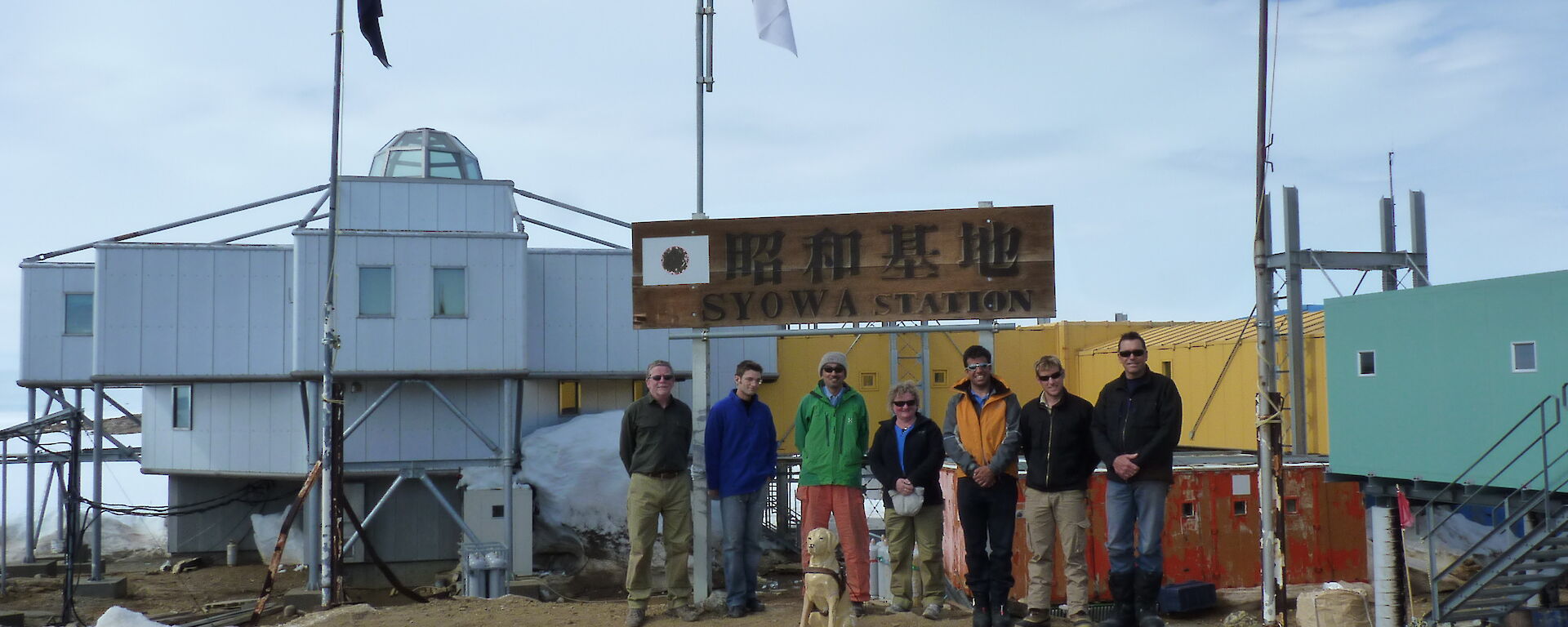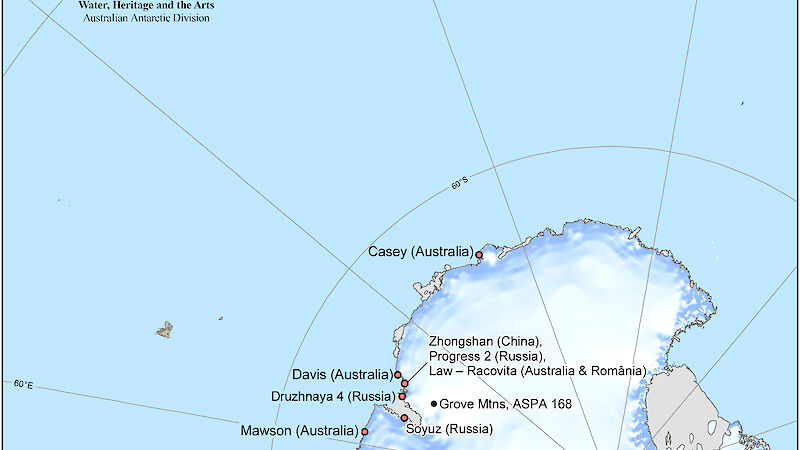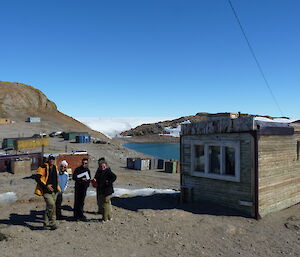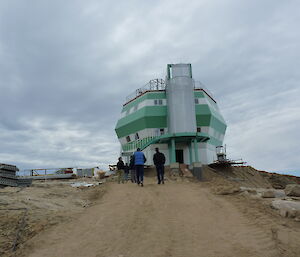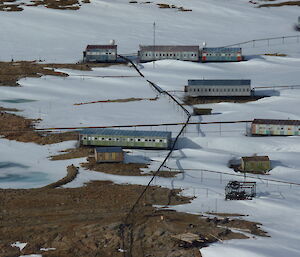In January Australia inspected five sites in eastern Antarctica in the exercise of its rights and responsibilities under Article VII of the Antarctic Treaty.
Article VII gives Treaty nations the right to appoint inspectors and to inspect all of the facilities of other Treaty nations at any time, with complete freedom of access. This provision was included in the Treaty as a safeguard to ensure compliance by the original signatories at a time (the late 1950s) of cold war tensions and suspicions. The inspection process was picked up in the 1980s and refreshed when the Treaty’s Environmental Protocol was developed, and now reflects the additional modern emphasis on environmental stewardship.
These inspections are an important responsibility for signatories to the Antarctic Treaty, where all member nations bear some cost of the stewardship, leadership and compliance monitoring of all activities in the region. The Antarctic Treaty nations have developed extensive checklists to guide inspections, and elements of them formed the basis for Australia's 2010 inspection program.
Our inspection party was comprised of Australian Antarctic Division Director, Lyn Maddock, and me (General Manager Policy), and a representative of the Department of Foreign Affairs and Trade, Peter Nagy. Mr Nagy also provided Japanese and Russian translation services in recognition of the general agreement amongst Antarctic nations that inspection teams should include a member fluent in the language of the nation whose facilities are being inspected.
We flew from Casey to Australia’s Davis station in early January and, after overnight survival training, flew west in our C212 turboprop aircraft to begin the inspection program. Our first visit was to the Russian base, Molodezhnaya, which was established by the USSR in 1962 on the coast of Enderby Land, some 800 km west of Mawson. It operated continuously until the mid 1990s and was once the largest Soviet/Russian station in Antarctica. It comprises many large and well-separated buildings, bulk fuel storage tanks, and a ski-way, about 12 km inland.
As Molodezhnaya was unoccupied at the time of the inspection, and its ski-way was unusable, we inspected it by air – the rear ramp of the C212 providing an excellent vantage point for safely harnessed inspectors during several low altitude and low speed passes. As there was substantial snow cover, detailed or firm conclusions about compliance with the Treaty or the Protocol, or the environmental state of the station and ski-way precincts, was difficult. However, some observation was possible and a full set of photographs has been provided to the Russian government to assist in planning and managing future activities at the site.
Departing Molodezhnaya, the C212 flew 200 km along the massively fractured ice coast to land on the ski-way inland of Japan's Syowa station, and was ferried to the station by helicopter.
Syowa was established in 1957 on East Ongul Island, Dronning Maud Land. The station generously hosted our inspection party and aircrew for three days, giving us ample time to tour the station with the outgoing Station Leader, Professor Akira Kadokura, and become acquainted with the Japanese scientific and operational programs.
We flew on to Mawson’s Rumdoodle snow airstrip to refuel, and visited Mawson for dinner and a tour of the station. This was the first Mawson visit by an Antarctic Division Director for 13 years. We then continued on to Davis where, with the support of a Sikorsky S76 helicopter, we spent the week focusing on Russia’s Druznhaya IV and Soyuz stations, and Antarctic Specially Protected Area 168 in the Grove Mountains.
Russia’s summer-only base, Druzhnaya IV, was established in 1987. The base comprises several small timber structures including a powerhouse, accommodation, dining and communications office, on Landing Bluff, some 215km southwest of Davis. The station was occupied when inspected, with several geoscience field parties operating in the vicinity.
Russia's Soyuz field camp was established in 1982 on an exposed low rock ridge on the eastern shore of Beaver Lake, in the south western corner of the Amery Ice Shelf, 422 km southwest of Davis. It has never been inspected. The camp, which consists of 12 light plywood huts in a line along the ridge, was unoccupied at the time of the inspection, and appeared not to have been visited for several years. Again, a set of photographs was provided to the Russian government to assist with planning and conducting future activity at the site.
Our final inspection task was a C212-supported flight to Antarctic Specially Protected Area 168 – Mount Harding, in the Grove Mountains. These magnificent mountains rise from below the Antarctic ice cap to tower more than 2000 m above it in majestic spires and wind-carved boulder fields – the main reason for their specially protected status. China’s over-ice traverse route from Zhongshan station to Kunlun station stages through this area, and Australia has an automatic weather station there to support forecasting and climate science for eastern Antarctica.
Back at Davis we set aside our official inspection duties to make courtesy calls to Australia’s neighbours and partners in the Larsemann Hills Antarctic Specially Managed Area, 100 km southwest of Davis: Zhongshan (China), Progress II (Russia), and the construction site of the new Indian station. We also visited Australia’s own, currently unoccupied, Law-Racovita summer base, shared with Romania. The five nations active in the Larsemann Hills area meet routinely in conjunction with the annual political, operational, environmental and scientific meetings of the Antarctic Treaty parties to develop collaborative science and operational programs and to find ways of minimising the environmental impacts of their combined activities in the region.
Finally we returned to Casey, stopping to refuel at Australia’s Edgeworth David summer field base, where an aerial whale census program had been based for several weeks.
Our inspection activity covered in excess of 12,000 km, and was entirely supported by air. Between inspection tasks we took every opportunity to involve ourselves in the daily routines and current issues of Davis and Casey. This knowledge will greatly assist management of the stations and their complex operations from the remote Kingston headquarters.
Of general note and continuing concern is the high cost of establishing, maintaining, and operating facilities in the remoteness and extreme environment of Antarctica, and the difficulties of eventually decommissioning, cleaning up and removing them. These issues are faced by all Antarctic operators, and provide much of the focus for potential environmental and operational collaborations amongst Treaty parties.
The reports of the individual inspections of this program were provided in draft to each nation whose facilities were inspected, to check facts and to provide an opportunity for comment and response. The full report was then compiled and provided to all Antarctic Treaty parties at the XXXIII Antarctic Treaty Consultative Meeting in Uruguay, in May.
Inspections provide the incentive for all parties to continue to improve the efficiency and compliance of their activities and to learn from and collaborate with each other. Australia’s commitment to the Antarctic Treaty, to sound stewardship, and to environmental protection, continues through our strong engagement in Antarctica, the Southern Ocean, and in all the forums of the Antarctic Treaty system, and through further inspections planned for the coming years.

